Rooftop tents look ace, but do you really need one? We put the TentBox Go through its paces
From staying out of reach of wild beasts to clambering up and down ladders at midnight – the pros and cons of camping on top of your car

I recently had the opportunity to road test a rooftop tent, and the thought of sleeping on top of my car got me childishly excited. It wasn’t until I was in the tent, laying there in a pre-slumber contemplative state and staring at the stars through the mesh roof, that I started to question why. What is so appealing about camping out in such an unusual and elevated position?
Over the last three decades I’ve used and tested dozens of tents and camping set-ups in a personal and professional capacity, from lightweight solo backpacking shelters and minimalist bivy sacks, tarp rigs and hammocks, through to behemoth family tents with multiple rooms and a bigger footprint than Godzilla.
I’ve seen the technology and materials used evolve, and come across some truly impressive designs, but never before have I been quite so enthusiastic about testing a tent as I was at the prospect of putting the TentBox Go through its paces.
I wasn’t alone in this reaction either – everyone I sent a photo of the rig to started raving on about wanting one. (Well, everyone except my wife, which was disappointing, since I was already formulating an argument for buying one.)
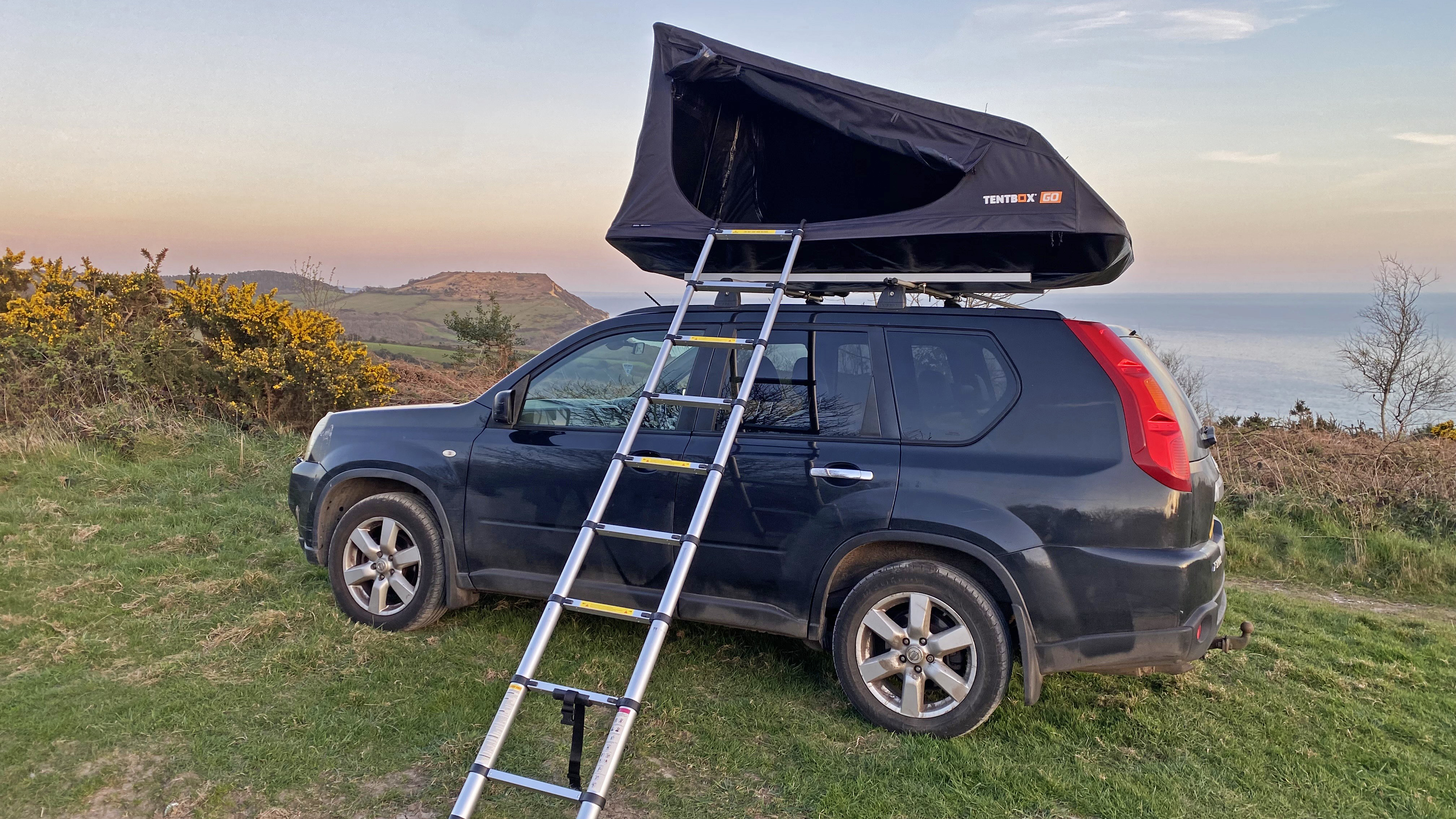
Is it the thought of transforming your boring everyday vehicle into a virtual campervan that makes it seem cool? Undoubtably, part of the appeal is the novelty factor. Sleeping on the roof of anything feels more fun than being on ground level to me. Given the option, I’ll always choose top bunk over bottom. And what would you rather have in your garden: a shed or a treehouse? I’d pick the latter every time. (Again, my wife feels differently about this.)
Maybe I’ve not quite grown up yet. Or perhaps I’ve got a thing about ladders. (And the TentBox Go does come with the most amazing Inspector Gadget-style telescopic ladder, which I wanted to keep regardless of how well the tent performed.)
• List price: $1,199 / £995
• Weight (packed): 72.5lb / 33kg
• Open dimensions: 48in x 88.5in x 45in / 122cm x 225cm x 114cm
• Closed dimensions: 48in x 88.5in x 17.75in / 22cm x 225cm x 45cm
• Materials: (Sleeping pod) 280gsm rip-stop polyester canvas, with a 3000mm hydrostatic head rating. C6 DWR (water-repellency), 2400mm/24hr breathability and UV50+ protection. (Bed base) 600D polyester, with reinforcement strips and webbing ratchet straps for tightening
• Colors: Black
• Best use: Campsites, road trips, festivals, beach camping
A few hours later, when I had to locate and negotiate said ladder, to clamber down from my car-top nest and make a call of nature, I started to see some downsides to my upstairs abode. And then I got to wondering whether the novelty factor would wear off after the first few outings. Some cracks started to appear in my purchase plan, and I’d never get it past the boss if I couldn’t convince myself.
So, silencing my inner child, I decided to properly assess the real practical pros and cons of camping in a rooftop rig, as opposed to a more traditional terra firma-hugging tent.
Rooftop tents vs ground tents
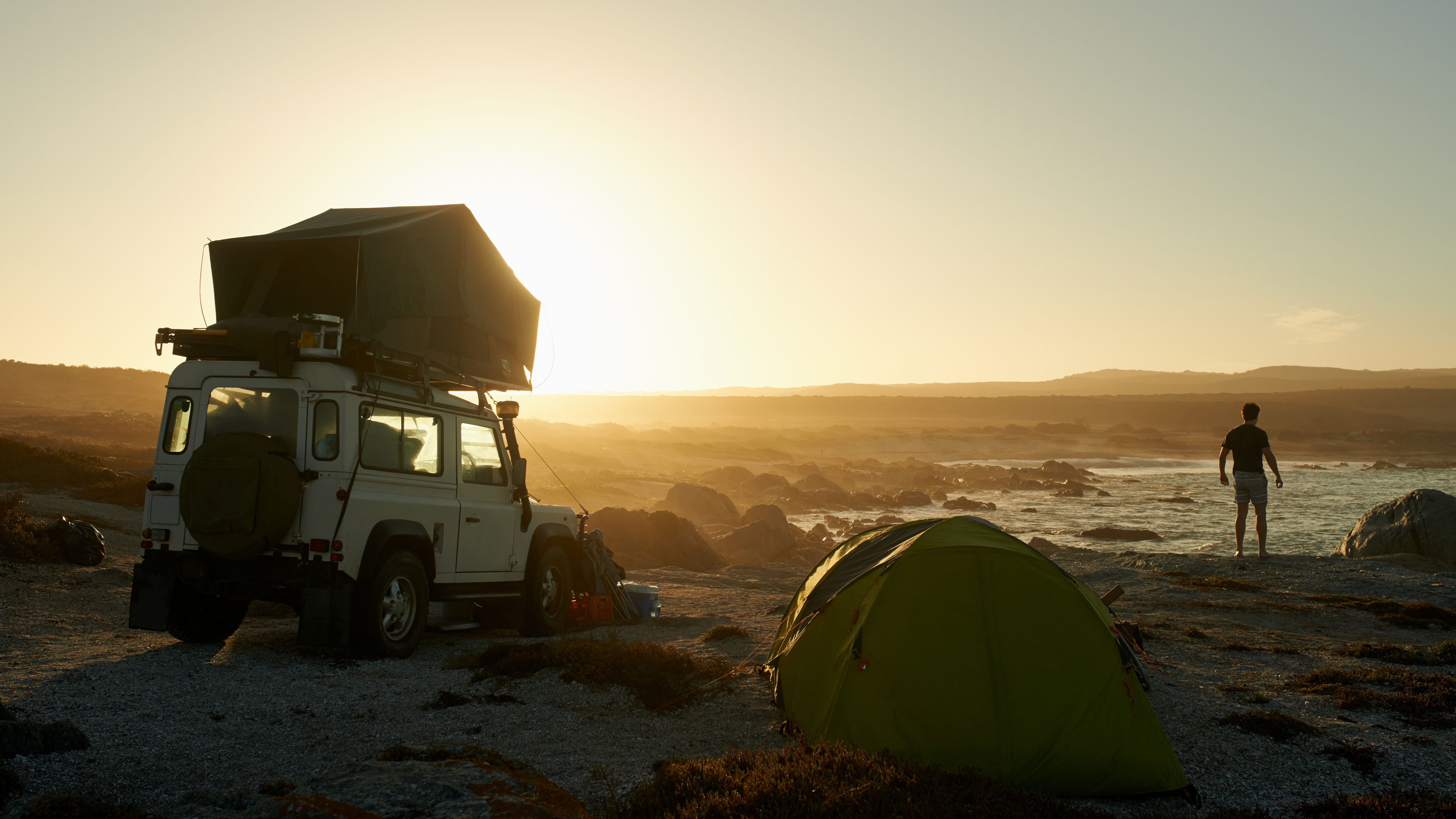
Speed and ease of pitch
There are some excellent pop-up tents on the market these days, and if you’ve weighed-up the pros and cons of pole tents verses airbeam shelters, then you’ll already know that speed of pitch is one of the most compelling answers to the question why buy an inflatable tent?
However, none of these options can really compete with the quick and easy convenience of setting up a rooftop tent. There are some larger and more complicated rigs out there, but most rooftop tents can be assembled in seconds after you have pulled into your pitch, leaving you free to get the camping chairs out, fire up the stove and get some coffee brewing (or grab a cold can from the cooler).

Staying warm
Obviously you are a long way from the floor in a rooftop tent, and there are several benefits to this. The ground is very often lumpy and frequently wet and cold.
Quality tents will have good groundsheet with a high Hydrostatic Head to keep you dry. Using a footprint can further mitigate against moisture seeping through, but no matter how expensive your tent is, cold will permeate the floor during the early hours, and unless you have a decent sleeping pad with a high R number, paired with a high-performing sleeping bag, you will feel the chill.
In a rooftop tent you are protected from all this, although cold winds whipping between the roof of the car and the bottom of the tent can create a chill factor, and you will still require a sleeping mat to stay warm and comfortable (most manufacturers produce tailor-made inflatable mattresses that fit the inside of the tent perfectly, but they’re not always included in the purchase price). And at the other end of the scale, be aware that the high tent will get steamy hot if you park and pitch somewhere that receives the full blast of the sun.

Comfort
Unless you are using a thick camping mattress, your comfort levels in a ground tent are dependent on how level and lumpy the terrain beneath your groundsheet is. Wisely choosing where, and more importantly where not to camp, is the only way to ensure a good night’s sleep.
If you’re using a rooftop tent, you still need to park on reasonably level land, but it can be covered in holes, puddles, rocks, sticks, spiky thistles, thorny scrub and scratchy weeds, and you won’t feel a thing. Typically the floor of a rooftop tent is stretched taught across slats, so it works a bit like a hammock and is very comfortable to lay on. When two or more people are sharing the space, you usually have to install a divider so you don’t both roll into the middle.
As per above, I still strongly recommend using an inflatable mat inside the tent, for comfort reasons.
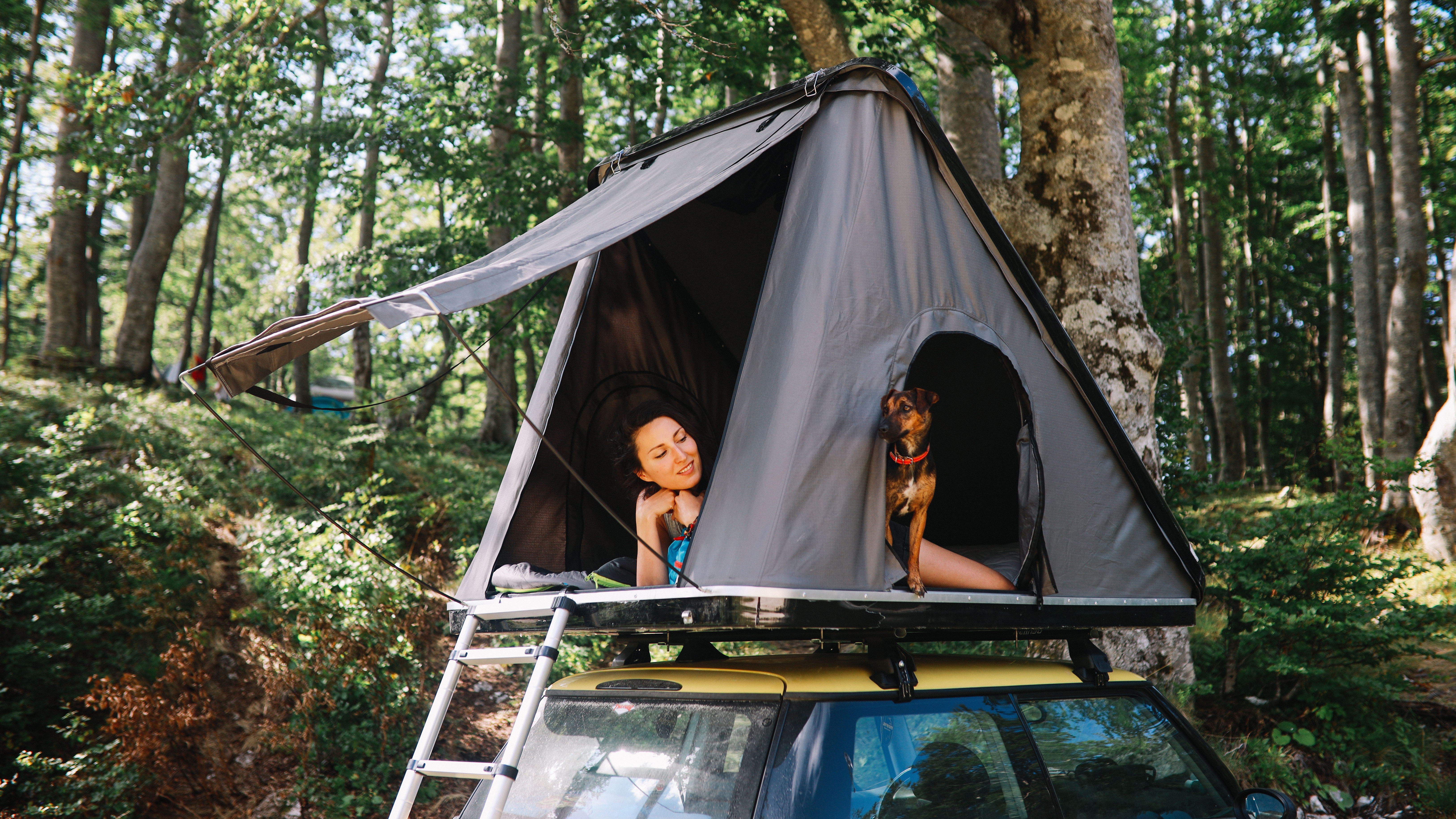
Space
So far roof tents seem to be coming out quite literally on top, but when it comes to living space, these lofty eyries simply can not compete with large ground-based tents.
Although there are some bigger, more complicated roof rigs out there for families, which unfold like a Transformer to create a couple of bedrooms, the TentBox Go (and many of its close cousins) only have as much floor space as the average vehicle’s roof will allow, so they are typically about the size of a generously proportioned 2-person tent, or small 4-person tent.
While this is fine for sleeping, when the weather is bad and you want to eat under cover or sit around playing cards, reading or just chatting, there is no sheltered communal space for doing this. Also, there is precious little room for organising your gear – although you can of course stash kit and clothing in your car.
More annoying is the lack of a porch or awning area, where you can take walking shoes and hiking boots off, and keep wet-weather gear out of the sleeping space.
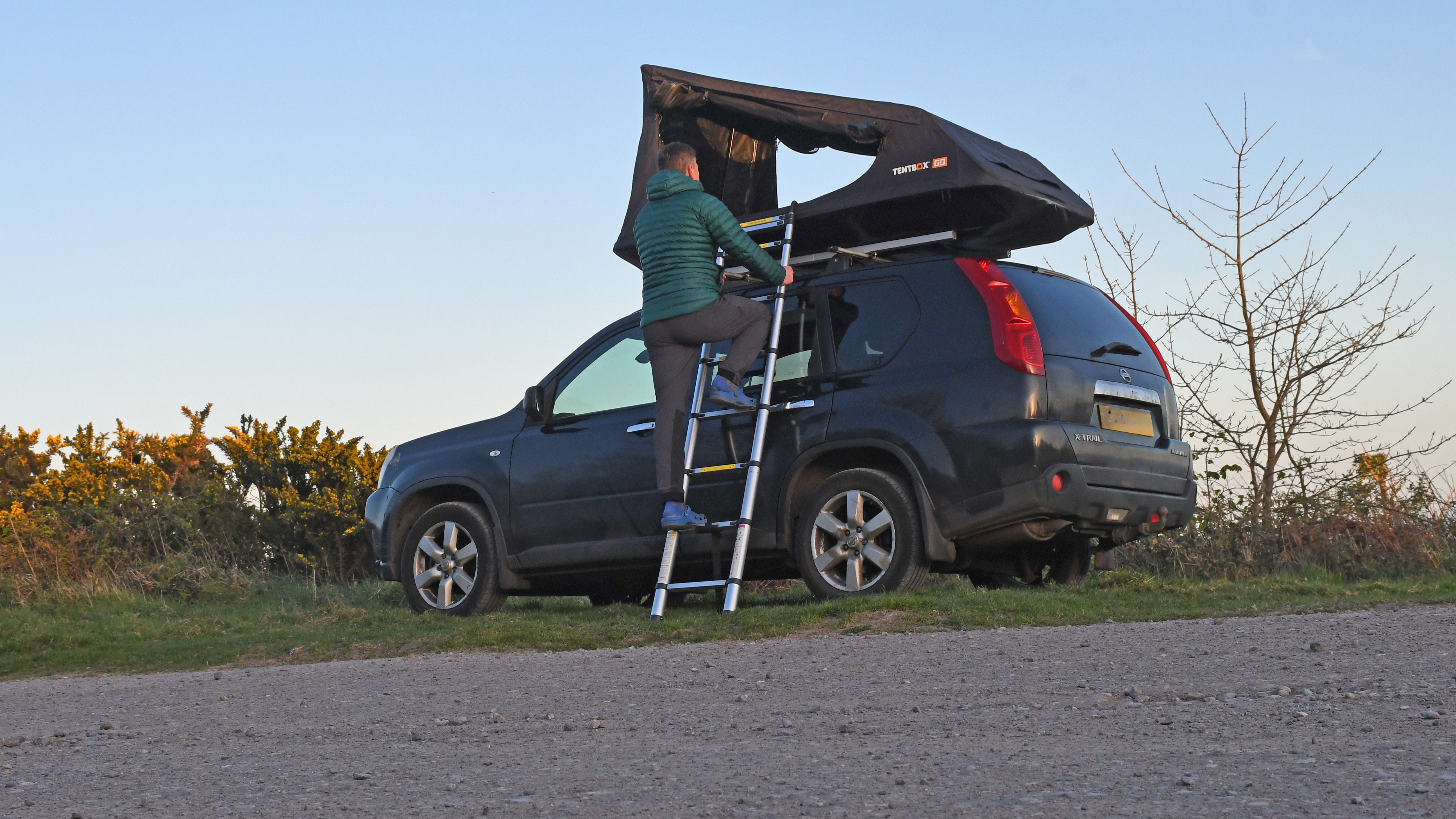
Convenience
OK, so the rooftop tents win when it comes to ease of set-up, but as much as I like having a ladder, it’s impossible to deny that it is much easier to get in and out of a ground-based tent, and this is an extra important consideration in the middle of the night.
For starters, you need to remember that you’re 6ft or more up in the air when you sleepily exit the tent (otherwise you’re going to wake up with a proper jolt), and then you need to locate the ladder and get up and down it, hopefully using a headlamp. Furthermore, if you want to head off for the day, or even drive to the store to restock on supplies, you have to drop the tent and take everything with you.
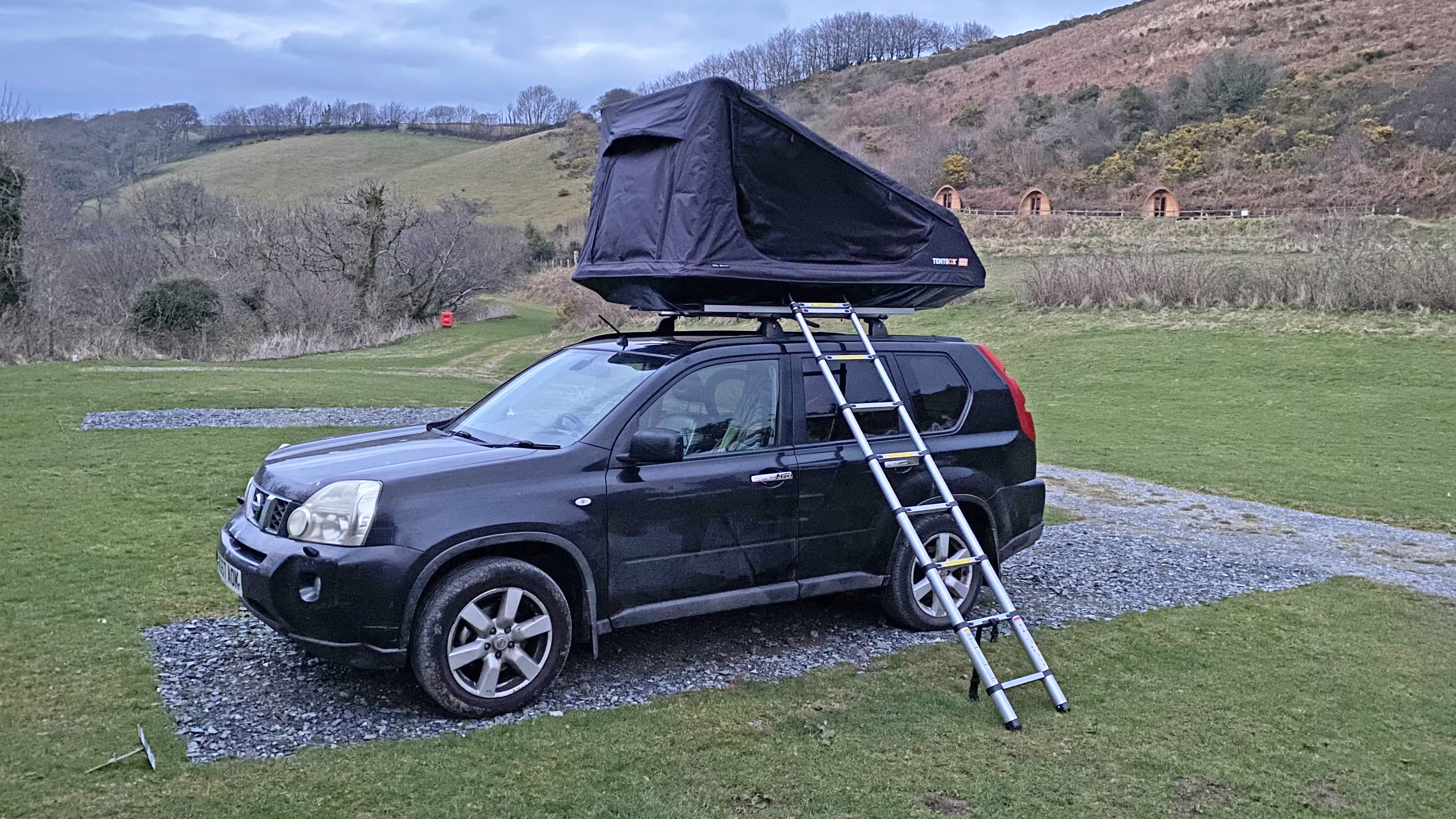
Versatility
On the face of it, this is a no brainer. Obviously you can only take a rooftop tent as far into the wilds as you’re willing to drive your car. If you’re roaming around in a monster truck or at least a decent 4WD, that might be quite far, but many people are effectively limited to using roadside camping spots and drive-in areas of national parks and nature reserves, whereas with a lightweight backpacking tent you can explore much further, go thru hiking and wild camping wherever the hell you feel like it.
However, in terms of price point and target demographic, a rooftop rig is more akin to a car-camping tent so that’s a fairer comparison, and you are equally restricted with a large, heavy ground-based tent, which you won’t be able to drag far from your vehicle.
Some campsites might struggle to decide whether to put you with the tents or the campervans, but generally speaking rooftop tents are a godsend for everyone, because they take up much less room than a vehicle parked next to a palatial ground tent.
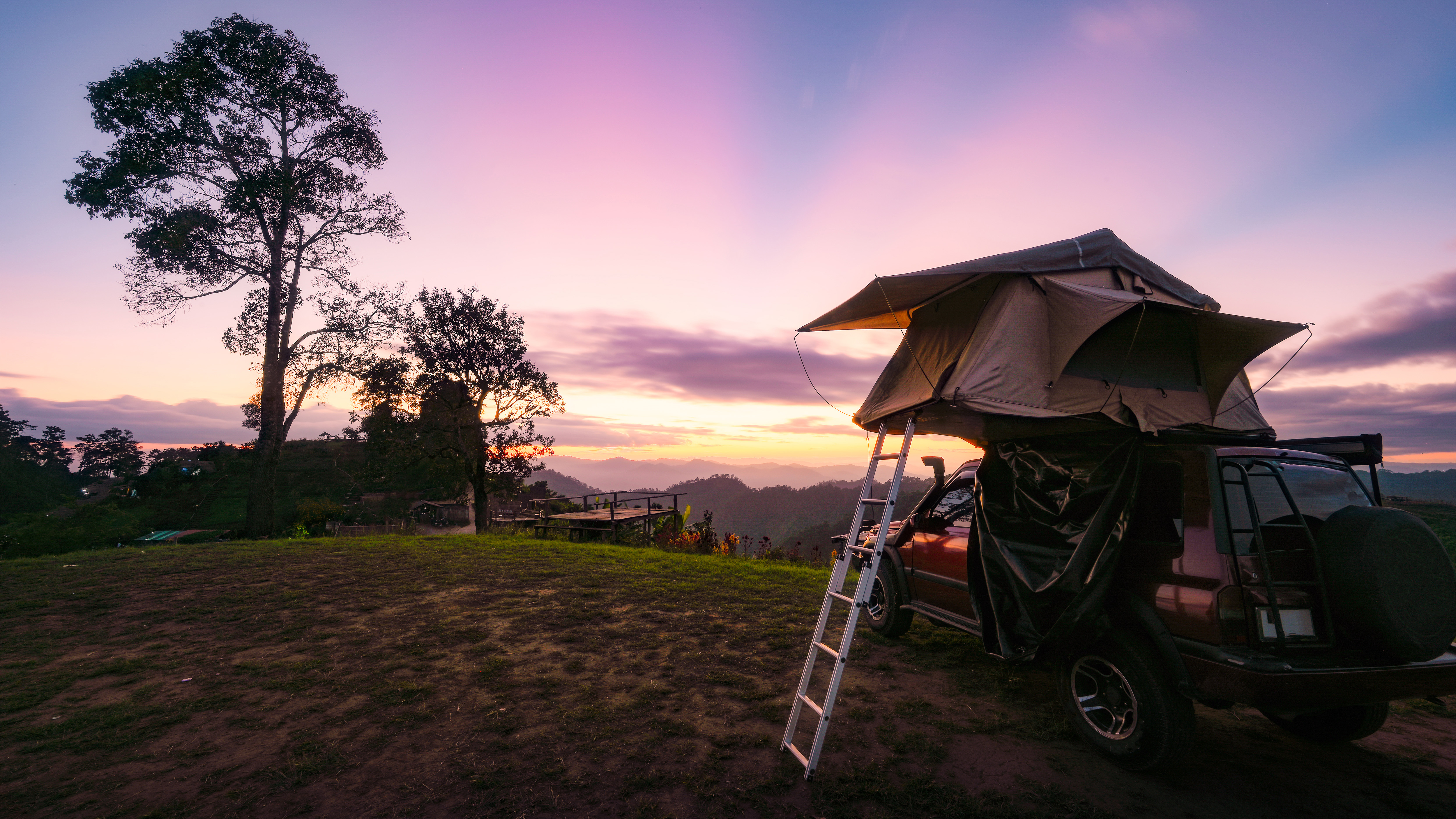
Durability
Like any piece of equipment that comes in constant contact with the ground, a traditional tent will show signs of wear and tear after a while. Groundsheets can be torn and holed by sticks, stones and abrasive terrain, tent pegs get bent and left behind, poles weaken after repeated use, and flysheets can tear.
We have a whole guide to tent repairs, and strongly encourage you to try and rescue kit before binning or, infinitely better, recycling it, but in reality, most people will simply replace compromised equipment.
Rooftop tents are obviously not immune to damage, but being off the floor eliminates the risk of puncture from below, there are no pegs to worry about losing or bending, and the design of the rigs tends to be very robust, with thick poles and hardwearing canvas.
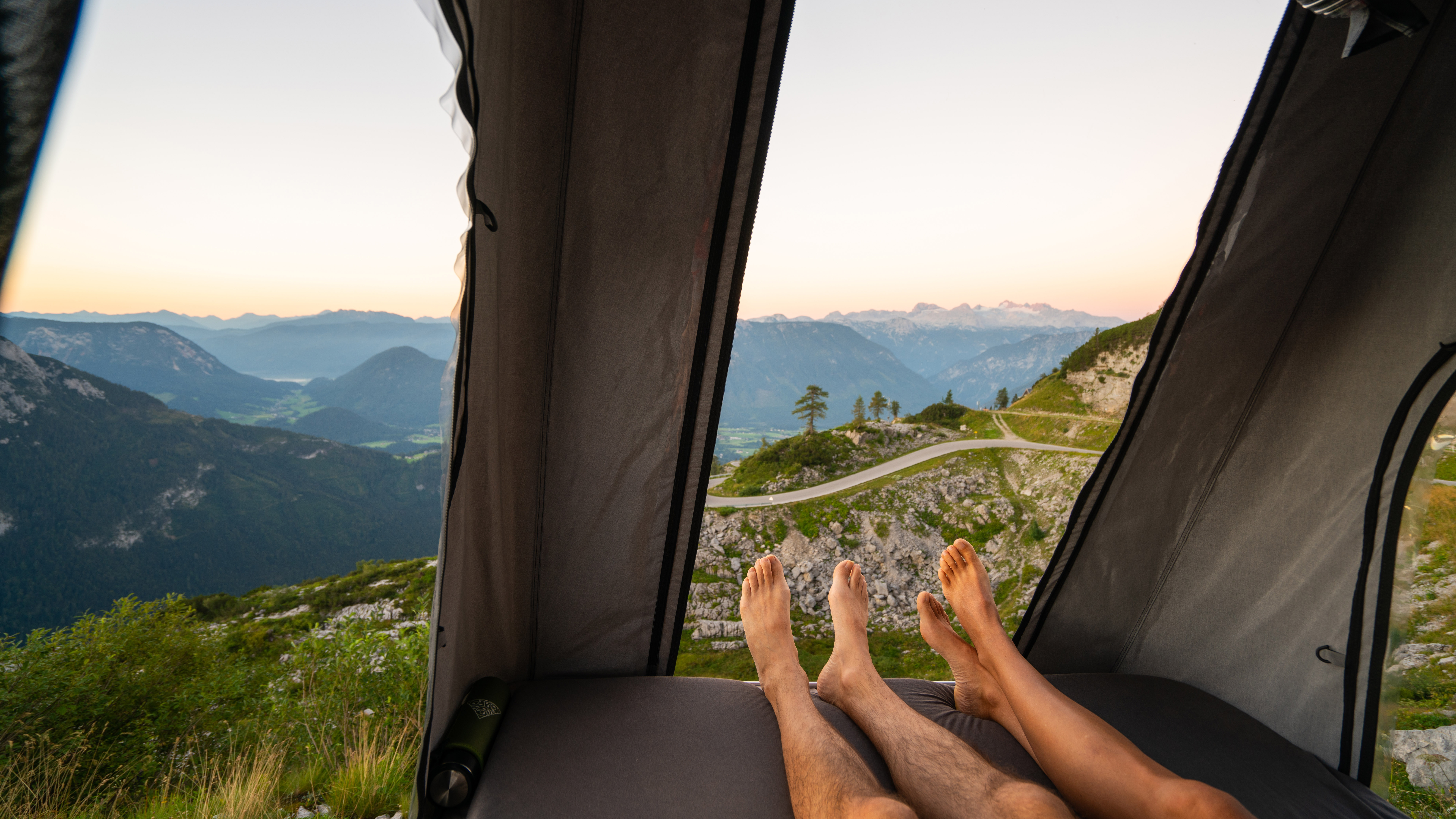
Elevation and views
No contest here – a rooftop tent offers that extra bit of elevation that lifts your shelter above obstructions such as bushes, scrub and hedges, often gifting you great views through the doors and mesh windows. The slight downside to this is that rooftop tents do get buffeted by the wind, and if you are sleeping atop a 4WD vehicle with soft suspension (as I was), then the whole shebang wobbles around and it can feel like you’re on a ship. I quite liked this, but it’s possible some people might get a bit nauseous).
One other important tip: either double lock your car, disable the alarm or leave the vehicle open, because movement (you tossing and turning) can trigger car alarms, and that is a nasty way to wake up, for you and everyone else in the vicinity.
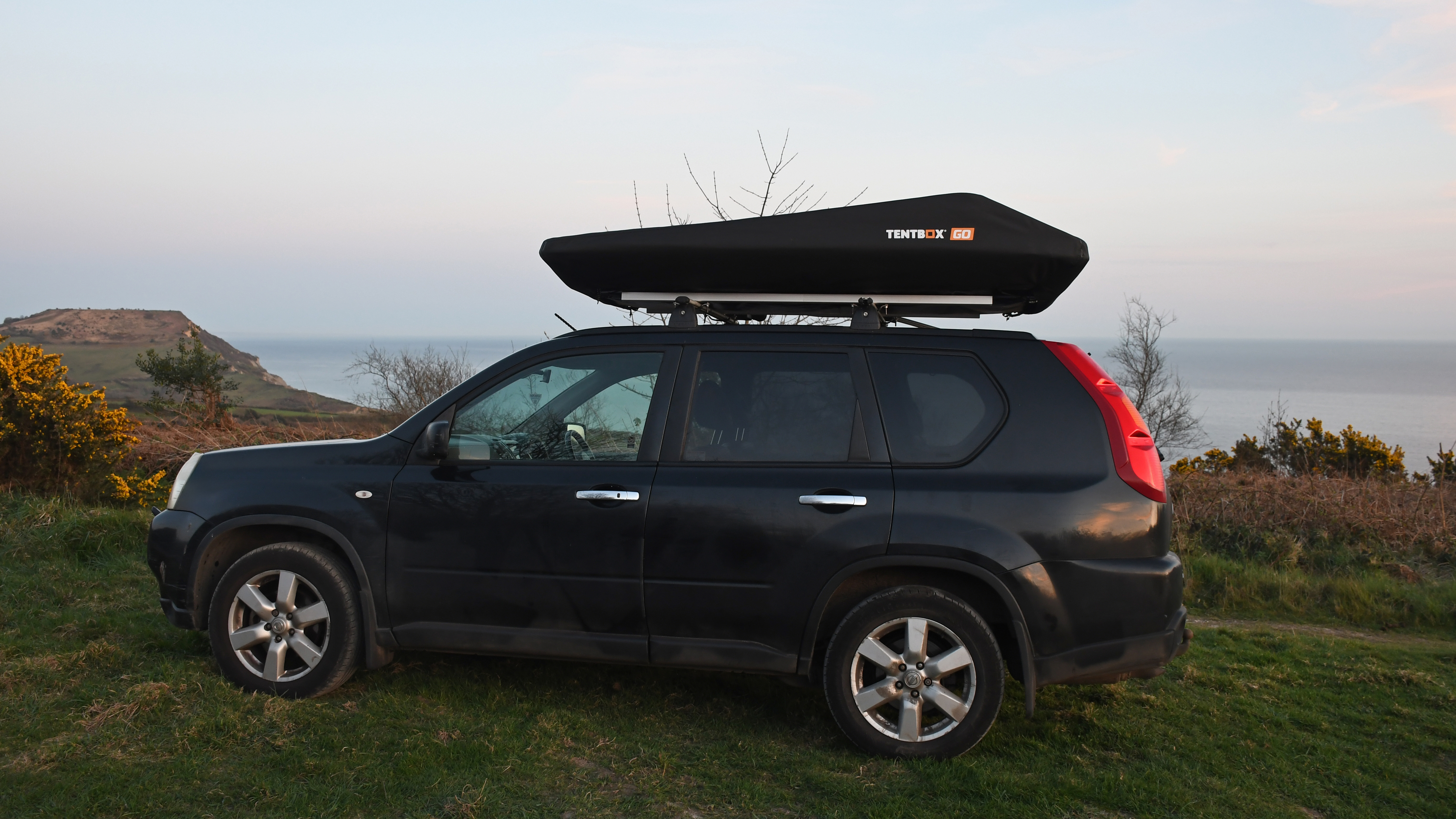
Storage
One of the benefits of having a rooftop tent is that it goes straight on your roofrack, leaving you with plenty of room inside the vehicle for all your other gear, from tables and chairs to camp cooking burners and much more. However, you also need to decide whether you’re going to keep the rig on your vehicle all the time – so you can take off and go camping at the drop of a hat with minimal kit preparation required – or only attach it when you’ve got a trip planned.
There are pros and cons for both: leaving it on increases your fuel consumption slightly (or more than slightly with bigger models) and potentially subjects the tent to more weather damage (although most have a protective cover). It also impacts where you can park (because of height restrictions) and what else you can carry on your roof (like bikes and kayaks).
But if you take it off, you have to find somewhere safe and dry to store a large piece of equipment, and go to all the effort of installing it every time you want to go camping.
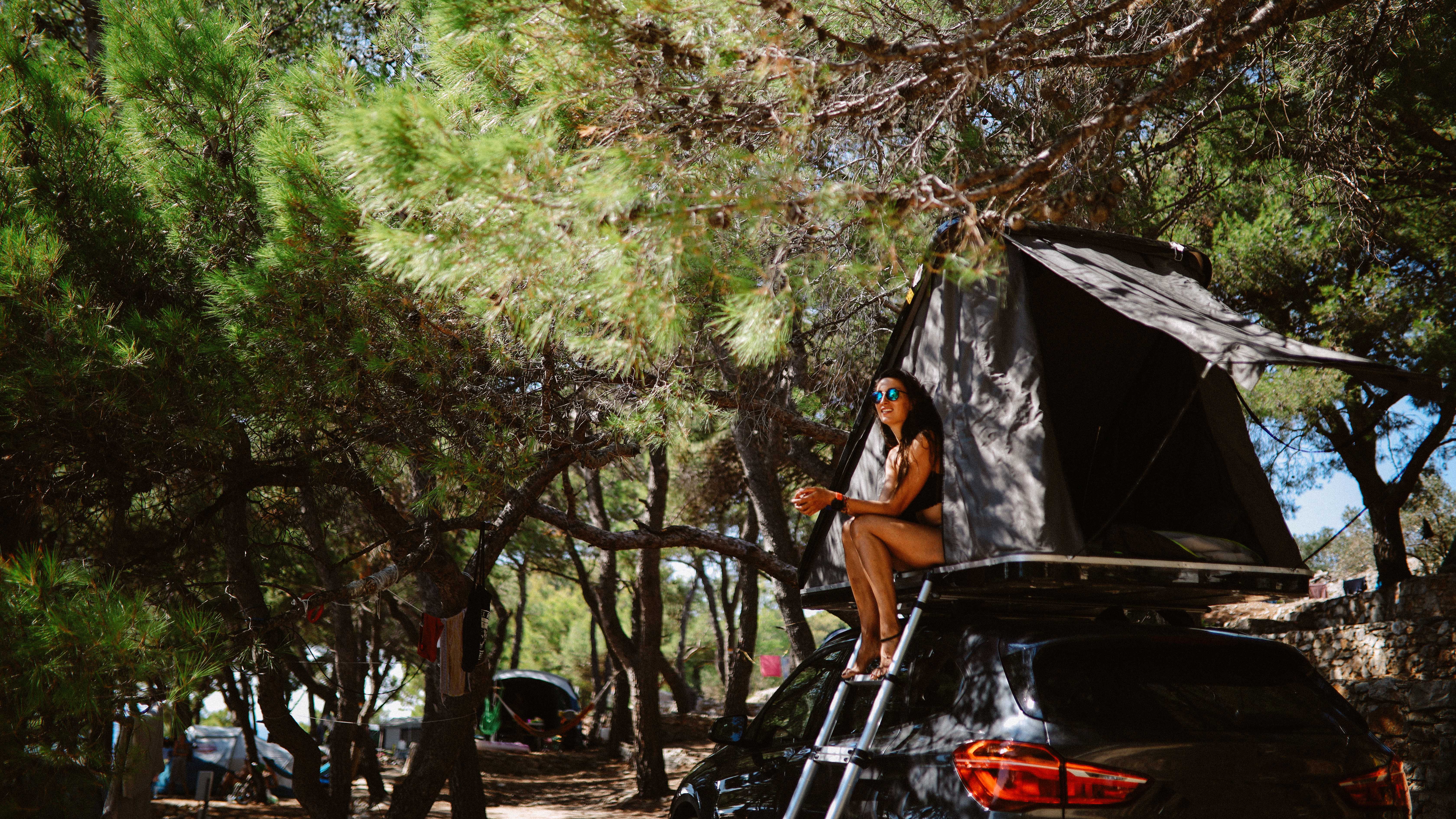
Safety and security
Being elevated off the floor has other benefits. It keeps occupants safe from the threat posed by other vehicles moving around in the area, which can be a serious concern in a ground tent in some scenarios. And, depending on where you are, extra height can offer some welcome protection from animals ranging from ants and other insects to free-roaming cattle and even wild beasts.
Originally developed for people driving across the plains of Africa, rooftop tents can deter (if not entirely shield you from) animals such as snakes, bears, big cats and crocs. Arguably rooftop tents are a little more secure too, since it’s harder for people to access them sneakily, but we still wouldn’t advise leaving valuables in them when you’re not around.
Price
Rooftop tents are typically a big-ticket investment. The TentBox Go I have been testing is a relatively affordable model, however, and doesn’t cost much – if any – more than a large tent, but remember it only fits two people and doesn’t offer enough room for doing anything other than sleeping.

Conclusion
I absolutely loved testing the TentBox Go, and I’m keen as mustard to try out some more rooftop rigs. I think this set-up is perfect for solo travelers and camping couples who spend a lot of weekends going on impromptu adventures, visiting festivals and going on extended road trips where they’re only staying in one place for a night or two.
For families, groups and people who like to set up a base camp for a week or so, going out for the day to explore the surrounding area, more traditional ground tents will work better (and there are so many to choose from you will definitely find one that ticks all your boxes). For me, as usual, I’m left greedily wishing I could have both…

Author of Caving, Canyoning, Coasteering…, a recently released book about all kinds of outdoor adventures around Britain, Pat has spent 20 years pursuing stories involving boots, bikes, boats, beers and bruises. En route he’s canoed Canada’s Yukon River, climbed Mont Blanc and Kilimanjaro, skied and mountain biked through the Norwegian Alps, run an ultra across the roof of Mauritius, and set short-lived records for trail-running Australia’s highest peaks and New Zealand’s Great Walks. He’s authored walking guides to Devon and Dorset, and once wrote a whole book about Toilets for Lonely Planet. Follow Pat’s escapades on Strava here and Instagram here.
